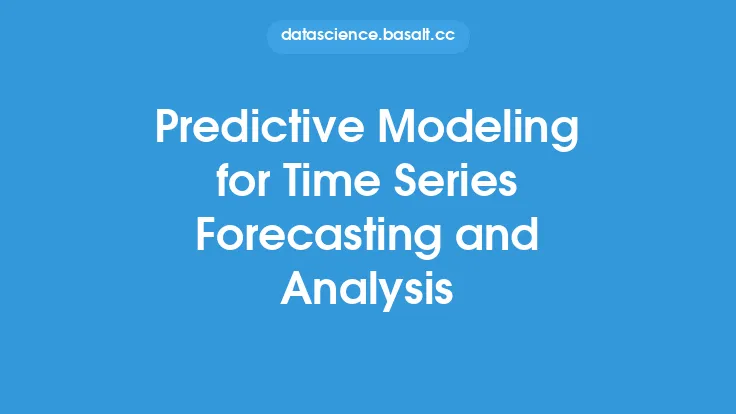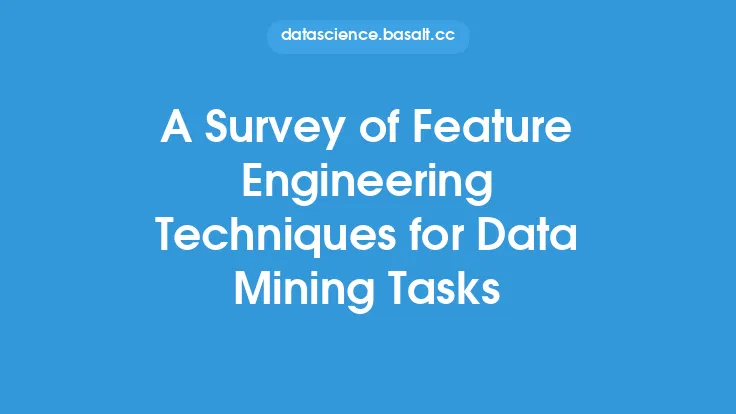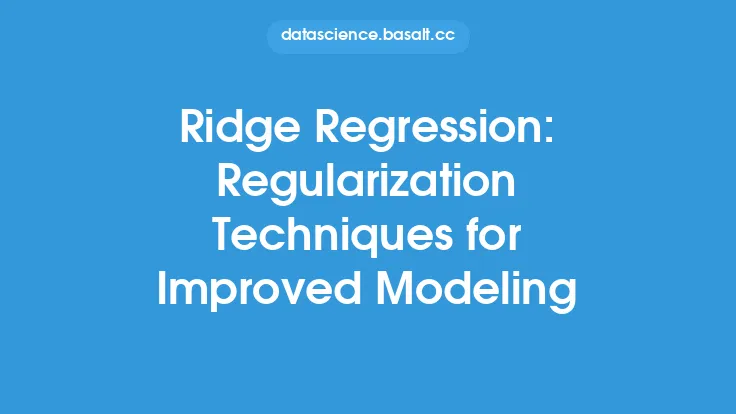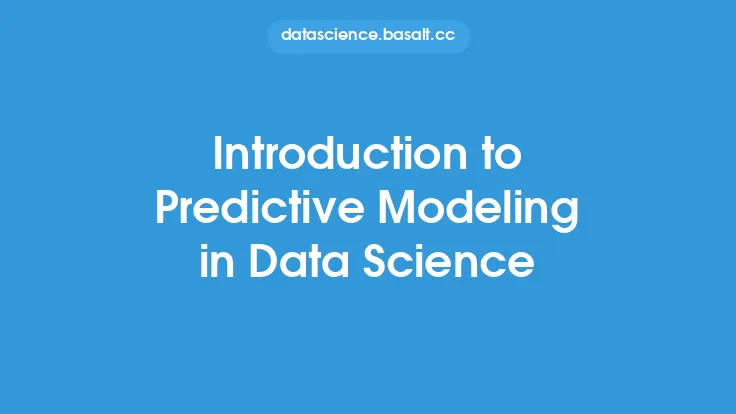Predictive modeling is a crucial aspect of data mining, enabling organizations to make informed decisions by forecasting outcomes and behaviors. At its core, predictive modeling involves using statistical and machine learning techniques to analyze historical data and make predictions about future events. In this article, we will delve into the world of predictive modeling for classification and regression tasks, exploring the fundamental concepts, techniques, and algorithms used in these areas.
Introduction to Classification Tasks
Classification is a type of predictive modeling where the goal is to assign a categorical label to a new instance based on its characteristics. For example, in a credit risk assessment scenario, a classification model might predict whether a customer is likely to default on a loan (yes/no) or in a medical diagnosis scenario, a model might predict whether a patient has a specific disease (disease/no disease). Classification models are widely used in various domains, including finance, healthcare, marketing, and customer service. The key challenge in classification tasks is to develop models that can accurately distinguish between different classes, often in the presence of noise, missing values, and class imbalance.
Introduction to Regression Tasks
Regression is another type of predictive modeling where the goal is to predict a continuous outcome variable based on one or more input features. For instance, in a house price prediction scenario, a regression model might predict the price of a house based on its characteristics, such as number of bedrooms, square footage, and location. Regression models are commonly used in areas like finance, economics, and engineering, where the goal is to forecast continuous outcomes, such as stock prices, energy demand, or traffic flow. The main challenge in regression tasks is to develop models that can accurately capture the relationships between the input features and the outcome variable, often in the presence of non-linear relationships and outliers.
Data Preprocessing for Predictive Modeling
Before building a predictive model, it is essential to preprocess the data to ensure that it is in a suitable format for modeling. Data preprocessing involves several steps, including data cleaning, feature scaling, feature selection, and data transformation. Data cleaning involves handling missing values, removing duplicates, and correcting errors in the data. Feature scaling involves transforming the data to have similar scales, which can improve the performance of some algorithms. Feature selection involves selecting a subset of the most relevant features to reduce dimensionality and improve model interpretability. Data transformation involves transforming the data to meet the assumptions of the modeling algorithm, such as normality or linearity.
Supervised Learning Algorithms for Classification and Regression
Supervised learning algorithms are a type of machine learning algorithm that learns from labeled data to make predictions on new, unseen data. In the context of classification and regression, supervised learning algorithms are widely used to develop predictive models. Some popular supervised learning algorithms for classification include logistic regression, decision trees, random forests, support vector machines (SVMs), and k-nearest neighbors (KNN). For regression, popular algorithms include linear regression, ridge regression, lasso regression, elastic net regression, and gradient boosting. These algorithms can be used individually or in combination to develop ensemble models that often outperform single models.
Model Evaluation Metrics for Classification and Regression
Evaluating the performance of a predictive model is crucial to ensure that it is making accurate predictions. For classification models, common evaluation metrics include accuracy, precision, recall, F1-score, and area under the receiver operating characteristic (ROC) curve. For regression models, common evaluation metrics include mean squared error (MSE), mean absolute error (MAE), R-squared, and mean absolute percentage error (MAPE). These metrics provide insights into the model's performance, such as its ability to correctly classify instances or predict continuous outcomes.
Handling Class Imbalance and Outliers
Class imbalance and outliers are common challenges in predictive modeling, particularly in classification tasks. Class imbalance occurs when one class has a significantly larger number of instances than the other classes, which can lead to biased models that favor the majority class. Outliers are instances that are significantly different from the rest of the data, which can affect the model's performance. Techniques to handle class imbalance include oversampling the minority class, undersampling the majority class, and using class weights. Techniques to handle outliers include removing them, transforming the data to reduce their impact, and using robust algorithms that are less sensitive to outliers.
Model Interpretability and Explainability
Model interpretability and explainability are essential aspects of predictive modeling, as they enable stakeholders to understand how the model is making predictions and what factors are driving those predictions. Techniques to improve model interpretability include feature importance, partial dependence plots, and SHAP values. Feature importance involves ranking the input features by their contribution to the model's predictions. Partial dependence plots involve visualizing the relationship between a specific feature and the predicted outcome. SHAP values involve assigning a value to each feature for a specific prediction, indicating its contribution to the outcome.
Common Applications of Predictive Modeling
Predictive modeling has numerous applications across various domains, including finance, healthcare, marketing, and customer service. In finance, predictive models are used to forecast stock prices, predict credit risk, and detect fraudulent transactions. In healthcare, predictive models are used to diagnose diseases, predict patient outcomes, and personalize treatment plans. In marketing, predictive models are used to predict customer churn, forecast sales, and optimize marketing campaigns. In customer service, predictive models are used to predict customer satisfaction, detect sentiment, and optimize service delivery.
Best Practices for Predictive Modeling
To develop effective predictive models, it is essential to follow best practices, including data quality checks, feature engineering, model selection, hyperparameter tuning, and model evaluation. Data quality checks involve ensuring that the data is accurate, complete, and consistent. Feature engineering involves selecting and transforming the input features to improve model performance. Model selection involves choosing the most suitable algorithm for the problem at hand. Hyperparameter tuning involves optimizing the model's parameters to improve its performance. Model evaluation involves assessing the model's performance using metrics and visualizations to ensure that it is making accurate predictions.
Conclusion
Predictive modeling is a powerful tool for classification and regression tasks, enabling organizations to make informed decisions by forecasting outcomes and behaviors. By understanding the fundamental concepts, techniques, and algorithms used in predictive modeling, practitioners can develop effective models that drive business value. However, predictive modeling also requires careful attention to data quality, feature engineering, model selection, and model evaluation to ensure that the models are accurate, reliable, and interpretable. By following best practices and staying up-to-date with the latest techniques and algorithms, organizations can unlock the full potential of predictive modeling and drive business success.





